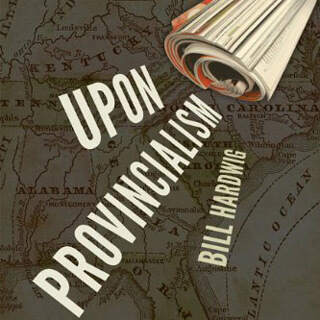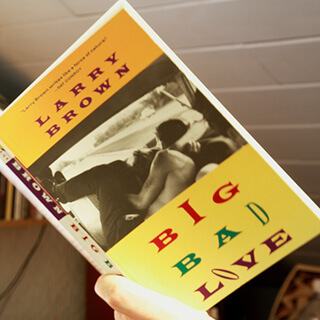Overview
Southern local color in the post-Reconstruction era provided the region with one of its most effective pathways back into national prominence through its appeal to northern curiosity and nostalgia. Like other regional varieties, southern local color could both celebrate the way that different cultures affirmed nationally favored similarities, and it could also make separatist claims more palatable through the charming presentation of difference. A regional affinity for this genre grew out of the South's plentiful unusual accents and vernacular vocabularies and its association in the national mind with a unique plantation economic base. Most importantly, the South had race, America's most visible metaphor of human difference, so that southern practitioners of local color, writing out of backwoods Georgia, James River plantation Virginia, or Creole New Orleans could adapt regional peculiarities of all kinds to plots that frequently hinged on one favored peculiarity, racial difference.
Local Color
Local Color as a literary genre bears the full weight of the concept of region, for its typical stories and sketches offer highly particularized visions of "locale" that are "colored" by regionally defined characters, settings, folkways, and dialects. The paradox, and thus the richness, of this often discounted form lies in the tension between local and national that its core texts embody. Local color fiction stresses isolation and otherness, but also makes, however uneasily, a case for the nation's ability to reconcile and accept divergent regional identities. Local color writers might be seen as promoting a separatist view of region through their attention to difference and unique detail, but they might also be seen as arguing an early brand of diversity by depicting attractive communities that could access cross-regional agreements about values that defused troubling surface differences. The popularity of local color fiction after the Civil War has usually been explained as a passing fancy of national taste, whereby audiences particularly in northern urban locations indulged their curiosity about the out-of-the-way, quaint, disappearing, ways of life associated with rural, underdeveloped, and (in the case of the South) newly conquered regions. It is possible, however, that the readers of local color saw, or longed to see, something of themselves, or at least something of their own roads not taken, in characters whose lives had remained more deeply rooted in place and community than their own. The political ramifications of this potential identification are clear. Writers who could not claim membership in the nation’s dominant cultural scheme could, through the attraction of local color, use the genre to "claim kin," to gain a sympathetic hearing for sectional or minority views and values.
The southern writer, particularly after the Civil War, saw the necessity of devising a literary agenda to advance a political one and found in local color writing a successful formula for this program, especially during the Reconstruction and post-Reconstruction era, roughly from 1870 to 1920. While no one representative southern writer "type" exists, and while southern writers of different gender, race, and regional identity proceeded according to quite different literary and political agendas, they did, despite all their differences, find the form compatible. The demand that local color fiction present distinct vernacular dialect, picturesque traditions, and exotic characters found fulfillment almost too easily in the diversities of the nineteenth century South. And in no respect was the South more different than in its underlying political structures. Both before and after the war, the South had unusual accents and vernacular vocabularies, and it was linked in the national mind with a unique plantation economic base that influenced its secular traditions as well as its religious habits. But most importantly, the South had race, America’s most visible metaphor of human difference, and one enshrined both in social manners and political practices designed specifically to identify and control "the Different." Southern practitioners of local color, writing out of backwoods Georgia, James River plantation Virginia, or Creole New Orleans adapted regional peculiarities of all kinds to plots that frequently hinged on one favored peculiarity, racial difference.
 |
| Frontispiece from Sherwin Bonner's Dialect Tales |
Southern white writers, both men and women, found local color fiction a convenient tool for the expression of racial paternalism. Many of the most popular local color works of white male writers (Thomas Nelson Page, Joel Chandler Harris, James Lane Allen) used the mechanism of the frame narrator who speaks in a detached, and also non-vernacular voice that controls the portrayals of quainter but also less accomplished types in the inside story. The double structures are designed to highlight the gap between simple and "peculiar" folk, colorful and sympathetic though they may be, and the educated, realistic, framing voice that the reader has no choice but to accept as a higher authority. White women writers often promoted the same white paternalism (Sherwood Bonner, Alice Hegan Rice), yet they were much less likely to create the remote, outside narrative voice and often used dialect to achieve less patronizing, more flexible versions of life in community.
African American men and women also wrote about a racialized social politics (Charles Waddell Chesnutt, Paul Lawrence Dunbar, Alice Dunbar-Nelson) from the point of view of their marginalization within an isolated South. They, too, found in local color a way to restructure hierarchies by creative manipulations of voice. Often they employed a white male frame narrator whose superiority is not confirmed but instead undermined by his blindness to the complexity of the story within the frame. White writers might harness the potential for nostalgia in local color to exploit fear of change or frustration with the complexities of the present; African American writers could answer by harnessing the genre's equal potential for irony to expose the blindness or self-serving motives of the master class.
Local Color became America’s first national literature of race. It also became a powerful tool through which American women could develop a distinctive, even heroic vision of lives too often pejoratively labeled "ordinary" and "small time." Through local color fiction southern women writers could critique their placement in a paternalistic hierarchy made possible by the exploitation of both racial and gender difference. Women came to dominate the genre of local color in the South, where they often focused on black-white family relations or upper-lower class divisions in ways that challenged the elitist and paternalistic message of works by white male counterparts (see Grace King, Kate Chopin, Mollie E. Moore Davis, Sarah Barnwell Elliott, Ruth McEnery Stuart). It is possible that the feminization of local color contributed to the genre's loss of popularity; in any case public taste in the early twentieth century increasingly turned toward realistic and historical fiction that treated "larger," and thus by inference more masculine themes.
Despite the discomfort that the label "local color" and even the label "regional" generate, southern literature beyond the local color movement has continued to thrive on ambivalence toward the "normalizing" of national identity that local color writing first articulated for American audiences. From William Faulkner in the Delta to Flannery O'Connor in middle Georgia to Lee Smith in the Appalachians, the South's best writers are stubbornly regional as they mine the complexities of place not as abstract value but as palpable agency. The history of modern southern literature confirms the literary—and political—durability of what local color writing sought to preserve: the ideal of the individual as one whose narrative unfolds within a community culture that refuses to be absorbed, or trivialized, or forgotten. 


